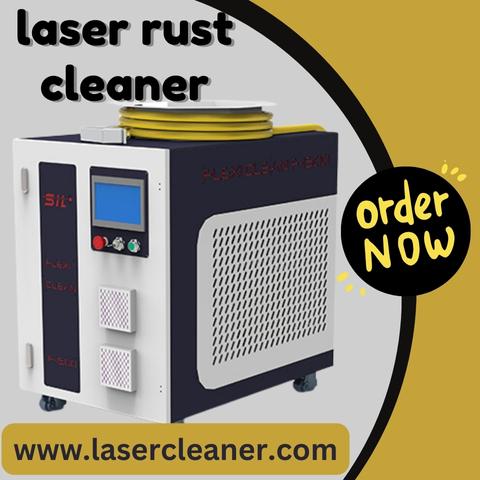In industries where metal surfaces are constantly exposed to environmental elements, rust formation is an inevitable challenge. Traditional methods of rust removal, such as chemical treatments, abrasive blasting, or manual scraping, often require extensive time, labor, and maintenance. The introduction of the laser rust cleaner has revolutionized the way rust is removed, offering a precise and highly controlled process that restores metals without causing damage to the underlying material.
A laser rust cleaner operates using high-intensity laser beams that target rust at the molecular level. This process does not rely on chemical solvents or abrasive materials, which makes it an environmentally friendly alternative. The laser energy interacts with the rust layer, heating it rapidly, causing oxidation to disintegrate, and subsequently allowing it to be easily removed. This method ensures the underlying metal remains intact, preserving its structural integrity.
One of the most important aspects of a laser rust cleaner is its versatility. It can be applied to a wide range of metal types, from steel and iron to aluminum and brass, without causing any warping or surface degradation. The precision of the laser allows operators to focus on specific areas that require cleaning, which is particularly useful for delicate components, machinery, and tools that have intricate designs or narrow gaps where traditional rust removal methods struggle to reach.
Industries such as automotive restoration, shipbuilding, manufacturing, and aerospace have recognized the impact of laser rust cleaning technology. In automotive restoration, for example, laser rust cleaners allow restorers to preserve the original metal structure of vintage vehicles while removing decades of rust buildup. Shipyards use the technology to clean hulls efficiently without the need for extensive scaffolding or harsh chemical treatments that could harm marine ecosystems. Manufacturing plants employ laser rust cleaning to maintain the quality and lifespan of machinery, reducing downtime and operational costs.
A key factor in the growing adoption of laser rust cleaners is their environmental efficiency. Unlike traditional rust removal methods that generate significant chemical waste, dust, or debris, the laser process produces minimal residue. This residue is often easily collected or blown away, reducing the need for additional cleanup and minimizing workplace hazards. The non-contact nature of the technology also eliminates the risk of scratches or mechanical damage, which is a common concern with abrasive methods.
In terms of operational performance, laser rust cleaners are equipped with adjustable settings that allow operators to control the intensity, pulse duration, and scanning speed. This adaptability ensures that the process can be optimized for different rust thicknesses, surface textures, and metal types. It also enhances safety by reducing the risk of overheating or excessive energy application that could compromise the metal.
The precision and efficiency of laser rust cleaning extend beyond industrial applications. Smaller-scale uses include cleaning tools, household metal items, or even intricate artistic metalwork. Artisans and craftsmen appreciate the ability to restore metals without altering their appearance or patina. The laser process also allows for selective cleaning, which means certain areas of the metal can remain untreated if desired, giving operators full control over the final result.
Maintenance and operational costs of laser rust cleaners have also become more manageable due to advancements in technology. Modern laser systems are designed with durability and user-friendliness in mind. Many units are portable, allowing them to be deployed directly at the site, reducing the need to transport large metal objects to specialized facilities. Automation options, such as robotic arms and programmable scanning, further streamline the cleaning process, making it faster, more precise, and less labor-intensive.
The adoption of laser rust cleaners represents a shift in how industries approach metal preservation and maintenance. By embracing this technology, businesses can enhance efficiency, reduce downtime, maintain product quality, and minimize environmental impact. From industrial applications to small-scale metal restoration, laser rust cleaning has proven to be a versatile, reliable, and forward-thinking solution that aligns with modern demands for precision and sustainability.
As the technology continues to evolve, innovations in laser power, portability, and scanning precision are expected to expand the range of applications further. This ensures that laser rust cleaning will remain a critical tool for industries and individuals who value precision, speed, and eco-conscious practices.
Final Thoughts
Laser rust cleaner are transforming the approach to metal restoration. With unmatched precision, adaptability, and environmental consciousness, this technology allows for efficient removal of rust without compromising the metal’s integrity. As industries and craftsmen increasingly embrace laser cleaning, it becomes evident that traditional rust removal methods are being replaced by a safer, faster, and more sustainable solution. The combination of technology, efficiency, and versatility makes laser rust cleaners an indispensable tool for modern metal maintenance.



